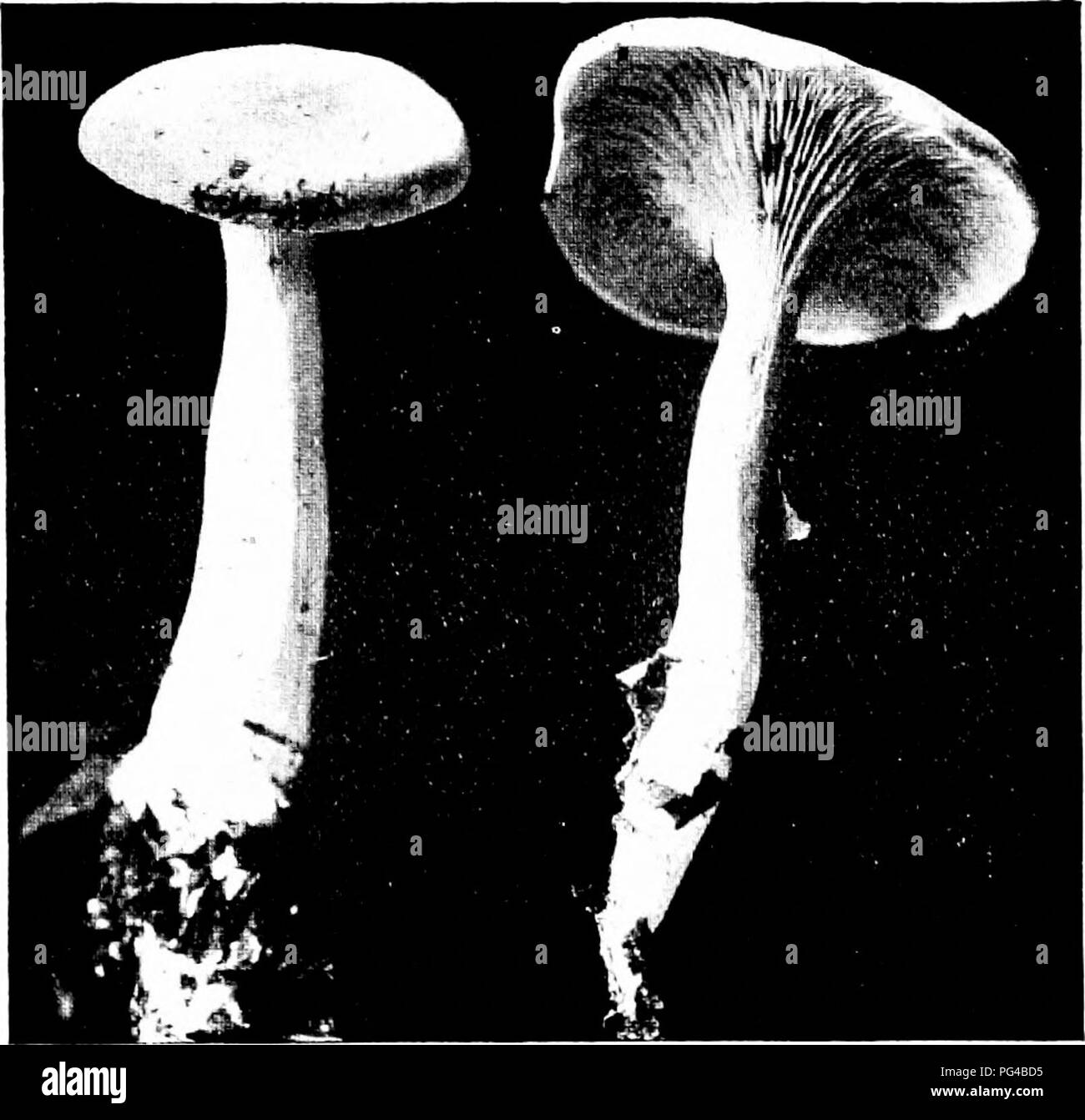. Minnesota mushrooms ... Botany; Mushrooms. 58 MINNESOTA MUSHROOMS Clitopilus prunulus Plum Top Cap medium, 5-12 cm. wide, white or somewhat grayish, more or less powdered, not sticky when wet, convex to plane, then depressed; stem 3-7 cm. by 6-14 mm., white, striate, solid ; gills long decurrent, rosy ; spores rosy or greenish, ovoid- elliptic, pointed at one end, 10-16 b/x. Common on ground in woods, from spring to frost; this species also occurs in the abortive form. Both forms are delicious, ECCILIA This genus resembles Clitopilus closely, but is distinguished by the tough cartilage-lik

Image details
Contributor:
Central Historic Books / Alamy Stock PhotoImage ID:
PG4BD5File size:
7.2 MB (236.4 KB Compressed download)Releases:
Model - no | Property - noDo I need a release?Dimensions:
1611 x 1552 px | 27.3 x 26.3 cm | 10.7 x 10.3 inches | 150dpiMore information:
This image is a public domain image, which means either that copyright has expired in the image or the copyright holder has waived their copyright. Alamy charges you a fee for access to the high resolution copy of the image.
This image could have imperfections as it’s either historical or reportage.
. Minnesota mushrooms ... Botany; Mushrooms. 58 MINNESOTA MUSHROOMS Clitopilus prunulus Plum Top Cap medium, 5-12 cm. wide, white or somewhat grayish, more or less powdered, not sticky when wet, convex to plane, then depressed; stem 3-7 cm. by 6-14 mm., white, striate, solid ; gills long decurrent, rosy ; spores rosy or greenish, ovoid- elliptic, pointed at one end, 10-16 b/x. Common on ground in woods, from spring to frost; this species also occurs in the abortive form. Both forms are delicious, ECCILIA This genus resembles Clitopilus closely, but is distinguished by the tough cartilage-like stem instead of a fibrous or fleshv one. The gills are decurrent, a. Figure 34. Clitopilus prunulus feature which sejiarates it from the allied genera, L e p t o n i a and N o 1 a n e a. The species are few and infrequent. The plants are small, and edible in our species. The name refers to the funnel-form cap. Eccilia cameo-grisea Hollow Top Cap small, 2-3 cm. wide, grayish pink, striate, more or less dotted with glisten- inc points, especiallv at the margin, funnel-form; stem 3-5 cm. by 4-5 mm., grayish pink, smooth, hollow, more or less bent; gills decurrent, rosy, distant, darker on the edge ; spores rosv, irregular, ellipsoid, roughened, 7 X 5|U. The name refers to the color of cap and stem. On the ground in woods, late summer to autumn ; pleasant both raw and cooked.. Please note that these images are extracted from scanned page images that may have been digitally enhanced for readability - coloration and appearance of these illustrations may not perfectly resemble the original work.. Clements, Frederic E. (Frederic Edward), 1874-1945; Geological and Natural History Survey of Minnesota. Minneapolis, University of Minnesota